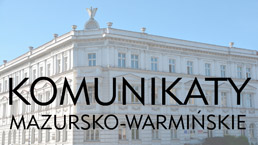Current issue
Online first
Special issues
Archive
About the Journal
Editorial Board
Editorial Council
Reviewers
Editorial guidelines
Publication ethics
Guidelines for reviewing
Remarks on “ghostwriting”
Copyrights and Open Access rule
GDPR Privacy Notice – for the authors of articles sent for publication in the "Komunikaty Mazursko-Warmińskie ("Masuro-Warmian Bulletin")
Contact
Price list
Golub Castle in the Middle Ages. Architecture and Construction Technique
1
Muzeum Zamkowe w Malborku
Online publication date: 2019-07-20
Publication date: 2019-07-20
KMW 2019;304(2):191-217
KEYWORDS
TOPICS
ABSTRACT
Golub Castle has aroused the interest of researchers since the 19th century. In the 1960s, in connection
with its planned reconstruction, architectural and archaeological research was carried out, the results of which,
however, were not fully realised. In 1989, further archaeological surveys were carried out to verify the question of
the earlier settlement. From the current research it can be concluded that there was no early medieval stronghold
in the place of the later castle. However, there was settlement until the 11th century. The next traces derive only
from the time when Golub was taken over by the Teutonic Knights in 1293. It can be concluded from the sources
that they erected a temporary wooden watchtower, which was the seat of the procurator in 1304. It is uncertain
whether it was situated in the same location as the castle, although perhaps it is associated with a layer of burning,
documented under the high castle. It is also unclear whether the original moat and embankment, protecting the
outer ward from the west, should be associated with this structure. Around 1305 a commandery was established
in Golub and the construction of a brick castle began. This saw the employment of the old Culm measure and the
geometric ad quadratum method. The four-wing convent house was built according to a homogeneous plan, but
it was implemented in stages typical for this type of building in Prussia. First, a peripheral curtain wall was built,
then the main and subsequent wings. Modifications were made during the process of construction, abandoning,
among others, the building of the Bergfrid. From the west, the castle was protected by a walled moat and parcham.
Initially the outer bailey was constructed of timber and earth, on a trapezoidal plan and protected by the aforementioned moat and embankment. It was not until around the mid-14th century that the brick perimeter of the
outer ward with towers was built, expanding them to the west and southeast. Inside, there were farm buildings,
known from modern sources and archaeological excavations. At the end of the 14th century, two cylindrical fire
towers were built in front of the west facade of the convent house, and at the beginning of the 15th century, two
houses were inserted between them. The last works carried out by the Teutonic Knights in the castle were related
to its reconstruction after the war of 1422.
We process personal data collected when visiting the website. The function of obtaining information about users and their behavior is carried out by voluntarily entered information in forms and saving cookies in end devices. Data, including cookies, are used to provide services, improve the user experience and to analyze the traffic in accordance with the Privacy policy. Data are also collected and processed by Google Analytics tool (more).
You can change cookies settings in your browser. Restricted use of cookies in the browser configuration may affect some functionalities of the website.
You can change cookies settings in your browser. Restricted use of cookies in the browser configuration may affect some functionalities of the website.




